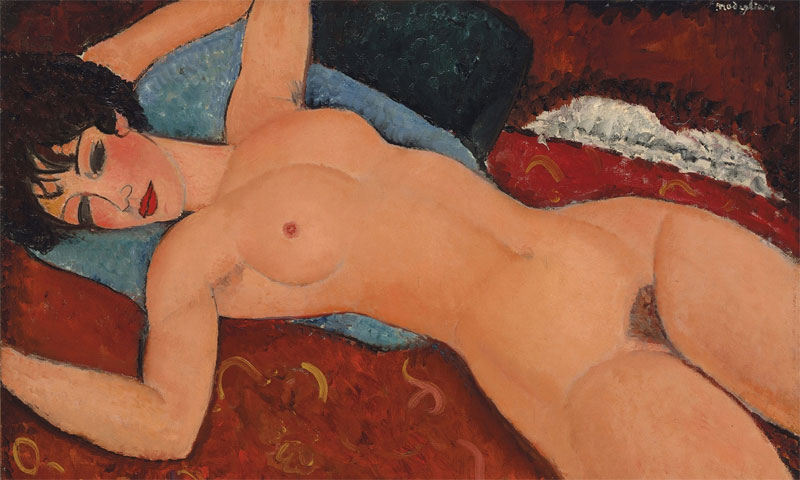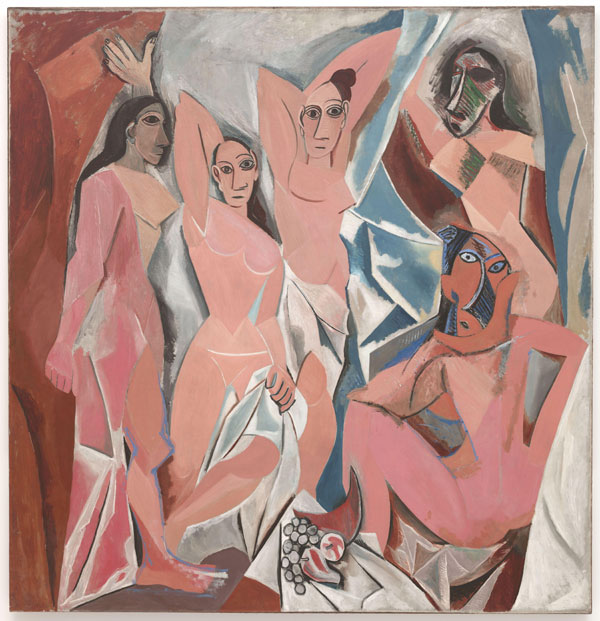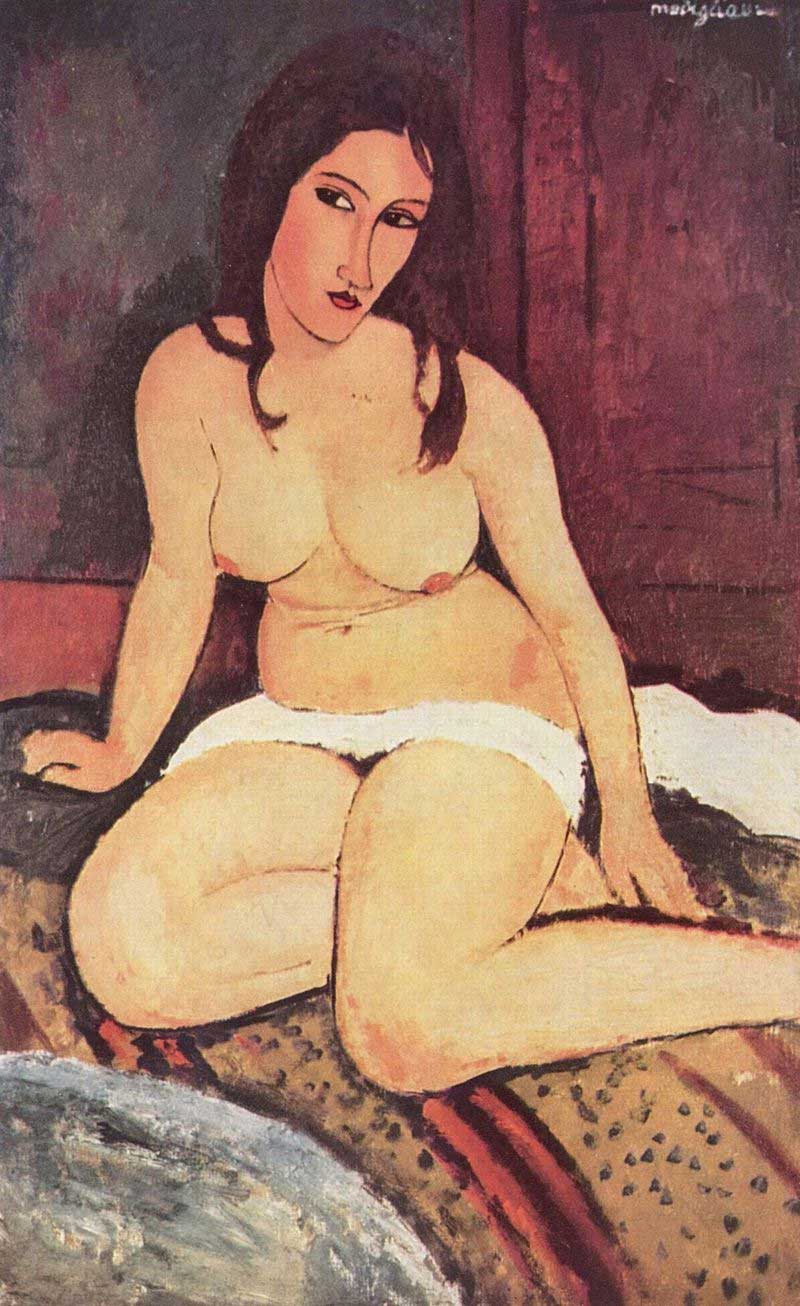The history of Venus and Amedeos Modigliani's Nu couché
On 9 November 2015 Amedeos Modigliani's reclining nude, Nu couché, was sold for a record price for a Modigliani of $US170.4m in an auction at Christies New York. It is the second highest price ever achieved at auction for an artwork, surpassed only by Picasso’s Les Femmes d'Alger (Women of Algiers) which sold for $US179.4m in May 2015. The painting is one of a series of nudes that Modigliani painted in 1917 under the patronage of his Polish dealer Léopold Zborowski. Can Nu couché, or indeed any painting genuinely be worth this astronomical amount?
This depiction of a nude woman on a bed is one of a long line of paintings that have progressed and fundamentally shaped European art for over five hundred years. What seems unique to the contemporary eye, is that after nearly one hundred years, Modigliani’s woman still appeals to our aesthetic and erotic senses. To someone seeing it for the first time today they could easily believe that she was painted in 1960 or even 2015.
Her red lipstick, roughed cheeks, plucked eyebrows and tussled hair are more in fashion now than they were in 1917 at the height of WWI. For 1917 she is not just modern but the ascetic is futuristic. Her beauty is like that of Gina Lollobrigida decades later.

Giorgione - Sleeping Venus, Gemäldegalerie Alte Meister, Germany
In art history, Modigliani’s Nu couché was the latest iteration modelled after Giorgione’s Sleeping Venus of 1510. This painting of a nude woman asleep with one arm stretched behind her head and one hand resting on her body with her fingers gently cupping her sex is considered revolutionary in European art. It is often cited as the beginning or precursor to modern art.
This painting shows the classical depiction of the Goddess Venus in a natural outside world. Yet she is lying on very man made sheets. Her body is sumptuous, her face sublime but the atmosphere is erotic rather than heavenly, evoking sexual forces not love.
Titian (who worked on the landscape and sky of Sleeping Venus) moved the erotic imagery one step further with his 1538 painting Venus of Urbino. She too is in a dual world but this one is all interior. She is in bed and engages the viewer with her eyes. Her gaze is an invitation as is her raised position. Her fingers linger invitingly over her sex. She is no longer a goddess but a woman natural in her desire.
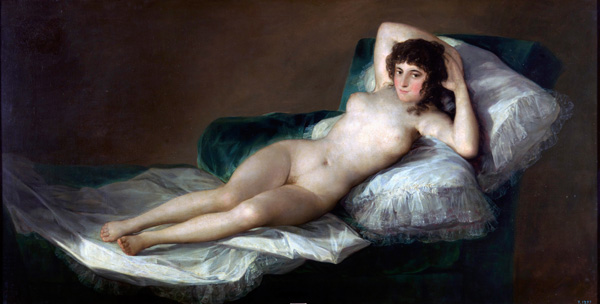
Francisco Goya -La Maja Desnuda, Museo Nacional del Prado, Madrid Spain
In La Maja Desnuda by Goya 1800, the nude woman depicted also gazes invitingly at the viewer. This time both arms are behind her head and her sex is more uncovered. She is raised higher than Titan’s beauty, her gesture more brazen and direct. This is a depiction of sex as fun and there is an honesty that modern art brought to the fore.

Edouard Manet - Olympia, Musée d'Orsay, Paris France
Édouard Manet’s 1865 Olympia pushed the boundaries again by showing the nude, raised on her pillows, engaging the viewer, but this time clearly offering sex for sale. Her name Olympia, orchids, black collar and pearls all screamed lady of pleasure and hedonism to viewers at the Paris Salon.

Henri Matisse - Souvenir de Biskra, Baltimore Museum of Art, Baltimore, USA
In 1907 Henri Matisse once more shocked audiences with his savage fauvist Nu bleu, Souvenir de Biskra. This shows the naked woman once more in nature, but a wild psychedelic nature, as if she has thrown her shame to the winds and become pure impulse.
Pablo Picasso - Les Demoiselles d'Avignon, Museum of Modern Art, New York USA
Picasso inspired by this went on to create his revolutionary Les Demoiselles D'Avignon.
This painting shows five nude women (prostitutes), disconcertingly confrontational. Here all love is gone and only sex remains. Bestial, reduced, all sentiment and human warmth stripped away. While it is true of all the paintings mentioned, Picasso’s work reveals far more about the painter and his state of mind than the unknowable subjects.
So how did Modigliani and Nu couché progress the theme? Between 1916 and 1919 He painted a series of nudes, paid for including materials and models, by Léopold Zborowski.
In this series of paintings he returned dignity, warmth and humanity to our vision of woman as Venus. His models are serene and seem comfortable and happy in their poses. There is no pretence or suggestion of immorality. They look like people, models for an artist who in his stylised way painted them. They are sensual, beautiful and human. Venus made flesh. In Nu couché with her hint of a smile and closed eyes we see a woman who could be here with us today. She is desirable, intriguing and as mysterious perhaps, as the most famous female ever portrayed.
Is the painting worth such a large sum of money? The artist was skilled and had vision. He knew Picasso and many of the most famous artists of his age. His paintings and sculptures are prized by collectors and museums. Nu couché is part of the journey of human history, thought and sensibility. It is unique and irreplaceable and a pointer to the future. This history is still unfolding as new generations grapple with the age old questions of our place in the universe and the dichotomy of our internal spirituality and physical desires. Importantly, it is a beautiful evocative painting.
In these respects the work certainly has intrinsic value. But how do you value art? You can't eat it or build bridges with it. You can speculate on it. Beyond the speculation that the buyer can sell for more at a later date is the hope that the work will resonate into the future. That unlike most human travails, it will not end up in the attic, irrelevant and forgotten. In truth all art is a commodity and worth ‘precisely what someone is willing to pay for it’. In November 2015 Nu couché was worth $US170.4m.
Other works by Amedeo Modigliani

Nudo sdraiato sul fianco sinistro

Nudo sdraiato su cuscino bianco
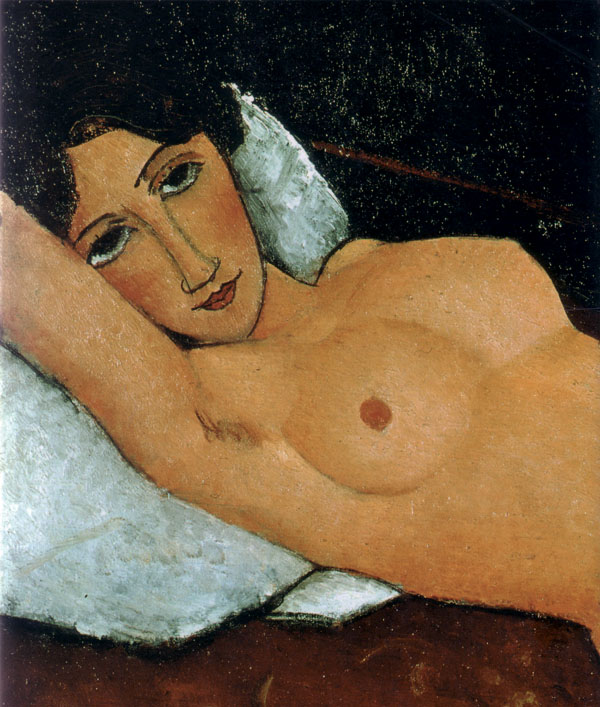
Nu collier corail

Gina Lollobrigida (1960s)
Sean De Siun


